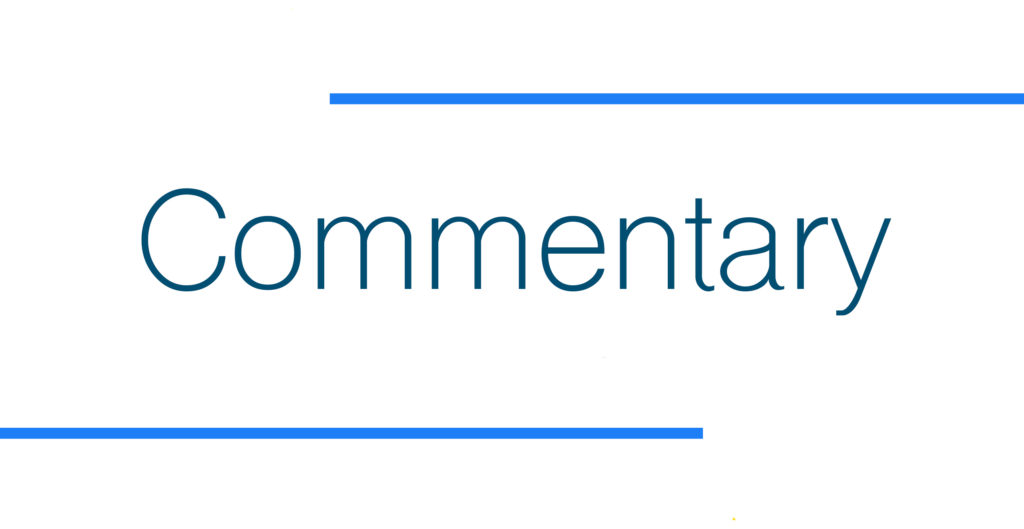Washington Watch is produced by the AACC office of government relations and policy analysis.
Three-fourths of all college and university students attend public institutions. Who pays for that education? At its most basic, there are three main sources of funding, state and local governments, the federal government, and students and their families.

Two-year sector institutions are the most dependent on state and local governments as sources of revenue. State and local appropriations represented more than half (54%) of the revenues of public associate-degree granting institutions in 2016-17. This compares to 41 percent, 37 percent, and 27 percent of revenues for bachelor’s, master’s, and doctoral degree-granting institutions, respectively. Yet, historically, states have been more generous to their flagship and research universities than community colleges.
If there was any doubt about the importance of state investment in higher education, a recently published Federal Reserve Bank of New York report should put it to rest. Clearer still, is how important state support is to community colleges.
State investment in community colleges
According to the report, each $1,000 per student increase in appropriations to two-year sector institutions results in measurable short-term and long-term positive results. The benefits to enrolled students include improved academic achievement and financial gains. The benefits extend to future students as well. The report found that “community colleges respond to increases in state appropriations by lowering net price, increasing instructional and academic support expenditures, and reducing student/faculty ratios.”
For each $1,000 increase in state appropriations per student at a two-year sector institution during the period of enrollment, students are more likely to: (1) transfer to a four-year institution (3.5 percentage points); earn at least a bachelor’s degree (4.6 percentage points); and, obtain a graduate degree (2 percentage points.
By age 35, the study found a pattern of increased credit card, auto and home loan debt, but decline in delinquencies. Moreover, by age 35, a $1,000 increase in state appropriations per student while in college raises credit scores by 13 points as well as the average income of the zip code of residence by $3,359 (7.37%).
Even though student loan borrowing increased with increased state investment in two-year institutions, delinquencies and defaults on student loans declined. This finding, the report states, is consistent with both students investing more in their education and their experiencing better labor market returns.
The positive impact of a $1,000 per student increase in appropriations to four-year institutions was more short-lived and subdued as evidenced by the 1.5 percentage point increase in obtaining at least a bachelor’s degree by age 25 dissipating by age 30.
State of state appropriations
The Federal Reserve report notwithstanding, the status of state appropriations even before the COVID-19 pandemic was anemic. The prognosis is dire at worst, troublesome at best. The good news is that 2019 was the seventh year in a row of increases (2.4%) in the per full-time equivalent student education appropriations, according to the 2019 State Higher Education Finance Report. However, this represents funding that remains almost nine percent below pre-recession levels. Furthermore, there is great variation in levels of and trends in funding across states. At the low end are New Hampshire and Vermont with less than $3,000 in per student funding to Wyoming at the high end with almost $19,000. While seven states have increased funding to pre-Great Recession levels, seven are still 30 percent below.
Federal role
Whereas states fund public colleges and universities, the federal government avails students with financial aid. Traditionally, the federal government has served as a buffer during economic downturns that affect state budgets. Unlike other areas, such as public safety, K-12 schools, and health care, higher education is susceptible to state budget cuts. This is the case primarily because higher education has an alternative source of funding in the form of tuition. The ability to raise tuition to compensate for lost state revenues is not uniform across all sectors of higher education, however. The Federal Reserve report “posit[s] that the two-year sector is less able to fully respond to changes in state support through a tuition mechanism because tuition is so low for community college students.”
The College Board estimates that in 2018-2019, the federal government’s investment was more than $150 billion in student financial aid, with $28 billion in Pell Grants. As enrollment increased during the Great Recession, total federal government funding peaked at $178 billion, almost $34 Billion in Pell Grant Funding.
The impact of the COVID-19 pandemic on higher education differs greatly from the Great Recession. There is an ensuing recession, but not a concomitant increase in postsecondary enrollment. The reverse happened, with the greatest loss experienced by community colleges according to preliminary fall enrollment data.
Higher education associations estimate that the financial impact of the pandemic on postsecondary institutions and students is about $120 billion. The CARES Act passed in March 2020 provided $14 billion to higher education institutions. No subsequent supplemental funding legislation has been enacted since, for which the American Association of Community Colleges continues to advocate.
Funding directed at institutions is important. Helping prop up state budgets is also important. The House passed largely on a partisan basis the Health and Economic Recovery Omnibus Emergency Solutions Act (HEROES Act, H.R. 6800), which provided $915 billion for state and local governments. A scaled down version of the HEROES Act was recently introduced with a $436 billion state funding provision.




